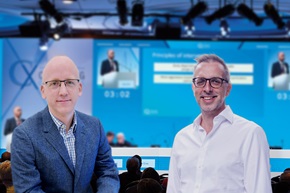
Balloon occlusion is one of the most hotly contested topics when it comes to vascular surgery in the setting of emergency trauma and, with this in mind, the Vascular Trauma Controversies programme at CX 2024 intends to move the conversation forward and stimulate fresh discussions.
Results from the randomised UK-REBOA trial were published in the closing months of last year, determining that resuscitative endovascular balloon occlusion of the aorta (REBOA) plus standard care does not reduce—and may even increase—mortality rates among trauma patients with exsanguinating haemorrhage, as compared to standard care in the emergency department. However, according to CX Executive Board member Christopher Aylwin (London, United Kingdom), this publication has “in itself, been quite controversial”.
While the trial results are “relatively clear” in demonstrating that REBOA “can do more harm than good”, Aylwin adds that some question marks remain over study design and patient selection—and, therefore, the role for REBOA in real-world hospital settings is “still up for debate”.
This very point will provide the framework for tomorrow afternoon’s CX debate, entitled “Is there a role for REBOA after the UK-REBOA trial?”. Discussions are scheduled to feature two experienced vascular trauma surgeons, with Nigel Tai (London, United Kingdom) arguing for the motion and Tim Stansfield (Leeds, United Kingdom) arguing against. As Aylwin says, “it will be fascinating to hear both sides of the argument”, with audience interaction and voting set to take place immediately after the debate.
Later in the session, Katherine Hurndall (London, United Kingdom) will deliver an update on the VISTA study—a nationwide vascular surgery audit, conducted by a trainee collaborative, that sought to assess the “true burden” of vascular trauma across the UK in a greater level of granularity than any previous research project.
“Some of the results were presented at the Vascular Society meeting [VSASM 2023] as a first look, but this will be a much more detailed, comprehensive look at the data, to align with some of the work that’s been going on with the Vascular Society to see how we can target a quality-improvement programme for trauma patients,” comments CX Executive Board member Ross Davenport (London, United Kingdom).
In addition to Hurndall’s initial talk, Rachel Bell (Newcastle upon Tyne, United Kingdom) will close the session by presenting the “role of the Vascular Society in vascular trauma” and outlining how the findings of VISTA can be translated into “process and care quality changes for improved outcomes, and in particular limb salvage”.
Davenport goes on to highlight “lots of involvement” from European Vascular Surgeons in Training (EVST), supported by the European Society for Vascular Surgery (ESVS), and predicts an “excellent” series of challenging vascular cases that will subsequently be discussed by panellists and audience members with a view to furthering practice.
“One of the things that has come out of the feedback from the previous sessions we’ve run is the importance of having case discussions for pathologies of vascular trauma that people don’t see that much of, but that can be particularly challenging,” he continues, also noting that this aspect of the programme chimes with CX founder Professor Roger Greenhalgh’s belief in the inclusion of surgical trainees, as “they are the future”.
“Vascular trauma doesn’t really have a home, but it’s becoming apparent that the Charing Cross Symposium is probably going to become a home for vascular trauma—in terms of presenting the best evidence, but also education and training opportunities,” Davenport concludes. “There is appetite to expand the programme, and we very much hope that, for next year, we’ll be putting together a whole-day programme, because it’s something that is increasing in incidence, and yet people don’t have the space, or the facility, or the forum, in which to discuss and learn about how to do the best thing for these types of patients.”













